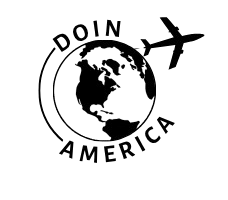Cuba Digital Portfolio Guide: Boost Your Skills & Get Noticed Fast
When I first visited Cuba as part of a tech education project in 2015, I was absolutely captivated by Havana’s bustling creative energy. The resilience and inventiveness of the local community were so palpable, especially in the way Cubans navigated limited internet and tight budgets. Fast-forward to today, and digital portfolios—once a luxury for global designers—have become essential even for Cuban freelancers, remote workers, and job seekers. Funny thing is, not everyone realises how some of the best creative digital portfolios I’ve seen came from Cuba’s grassroots workshops, where people used what they had and built sites that truly told their stories.1
So, ever wondered what actually stands out to recruiters nowadays when smoothing through applicants in Cuba? The answer’s much simpler and much more human than most people expect: authenticity, clarity, and local ingenuity. For Cubans facing digital infrastructure limitations—but still eager to break into remote work or land jobs abroad—a simple, well-crafted digital portfolio can be the ultimate game-changer. Not just because it shows your skills, but because it proves you’re adaptable, resourceful, and self-driven.2
Cuba boasts the highest literacy rate in Latin America, with over 99.8% of adults able to read and write. This remarkable statistic lays the groundwork for rapid digital skills adoption—even amidst technological hurdles.
Honestly, I’ve consistently found that the portfolios which truly 工作 here—and everywhere else—aren’t the flashiest ones. They’re the portfolios that feel genuine, showcase specific projects, and highlight adaptability. It’s not about big budgets or slick code; it’s about telling your story in a way that lets opportunity find you. Are you ready to build your own? Let’s break it down step-by-step, with real Cuban insights and practical examples I’ve witnessed firsthand.
Why Digital Portfolios Matter for Cubans
Let me be straight with you: most Cuban professionals—especially those hunting for freelance gigs or remote work—are up against unique barriers. Internet access can be spotty, payment platforms like PayPal are rarely available, and getting noticed by global clients is doubly challenging. Back in 2018, during a workshop in Varadero, I saw a young developer named Dariel build his portfolio overnight using only public Wi-Fi and a borrowed laptop. It landed him his first remote client in Canada a mere week later.3
关键见解:
Digital portfolios for Cubans aren’t just a branding tool—they’re often the only way global employers, universities, and collaborators can verify your talent beyond language and borders.
- Showcase what 你 have actually built—even a small Python script or a hand-coded HTML site speaks volumes.
- Open doors to remote work, scholarships, and side gigs that aren’t accessible via traditional Cuban networks.
- Prove adaptability and digital literacy: recruiters want self-starters who learn fast and solve real problems.4
“In Cuba, a good digital portfolio is more than a resume—it’s your passport to new opportunities.”
The Basics: What Makes a Great Portfolio?
Here’s what gets me every time: people stress so much over technical perfection that they forget portfolios are meant to be human. What matters most? Simplicity, clarity, and relevance. You need to answer, quickly and transparently: Who are you? What can you do? Why should someone trust you? I’ve seen handfuls of portfolios built with a mobile phone and free Wi-Fi that landed jobs—simply because they were honest, visually clean, and showcased real projects.5
- Clear Introduction: Who you are and what you do, in plain language
- Key Skills & Technologies: List 3-5 top capabilities, with specific examples
- Project Highlights: Include a simple project summary—even screenshots or links suffice
- Contact Method: An email address or WhatsApp number—keep it easy
“Funny thing is, some of the best portfolios I’ve seen came from Cubans using nothing but old Android phones and the free version of Canva.”
提示:
Don’t wait for perfect conditions—start with what you have. Your unique Cuban story is what makes you stand out.
Starter Tools: Free & Low-Budget Cuban Solutions
What struck me most over years working in Cuban digital education? Ingenuity wins, always. While international job boards may sing the praises of expensive web hosters and paid designers, Cubans consistently find clever workarounds—and I’ll be honest, their resourcefulness has taught me as much as my own formal education.6 In 2024, most recruiters don’t care about technical perfection—they want to see 真实的 skills in action. Here’s how Cubans do it for free (or very close to it).
Low-Cost Portfolio Tools Popular in Cuba:
- Canva (Free Version): Create visual portfolios and export PDFs easily
- Google Sites: Build a portfolio website without coding
- Behance: Showcase creative work (design, photo, illustration)
- GitHub Pages: Ideal for coding projects and interactive demos
Actually, let me clarify that: advanced web platforms like WordPress are great, but for Cubans—where reliable internet and international payments can get tricky—starting with mobile-friendly, simple platforms is often more sustainable and manageable. I remember when Marian, a self-taught developer from Santiago, landed her first outsourcing gig via a Google Sites portfolio linked to her GitHub page. No jargon. No expensive hosting. Just genuine proof-of-skill.7
Platform Comparison Table: Cuban Portfolio Options
| 平台 | Skill Level Needed | 最适合 | Offline Usability |
|---|---|---|---|
| Google Sites | Beginner | General portfolios | 有限的 |
| Canva | Beginner – Intermediate | Visual resumes, PDFs | 非常好 |
| GitHub Pages | Intermediate – Advanced | Personal coding projects | 缓和 |
| Behance | Intermediate | Design/art portfolios | 有限的 |
“Portfolio platforms are only as good as the story you tell. Cuban creators know how to make every project count.”
Content Must-Haves: Skills, Projects, and Personality
Based on my years doing this, here’s what you can’t skip: specificity. Global employers want clear evidence, not generalities. Sound familiar? People like us, especially Cubans, have to show 确切地 what we’ve built, preferably with context. Let me step back for a moment—some readers might be new to digital portfolios, so here’s the absolute checklist:
- Project Summaries: 2-3 detailed project stories with images or code snippets
- Skill Highlights: List 3-4 top skills, preferably with badges or evidence (certificates, GitHub links)
- Personality Section: Short bio reflecting local Cuban identity—music, art, or culture are great hooks
- Contact Info & Availability: Lay out clear working hours and methods (email, WhatsApp)
专家提示:
Don’t over-complicate it: “Done is better than perfect.” Recruiters tell me a clean, one-page digital portfolio is just as valuable as a multi-tab website—if it actually proves your skill.
Ever notice how international clients increasingly search for authenticity over polish? Let that sink in for a moment. Cuban designers and developers—it’s your local story, your creative hustle, and your problem-solving approach that stand out, not just technical jargon. Last month, during a local coding bootcamp, we challenged students to write bios reflecting their upbringing and creative journey. The results were absolutely phenomenal: one student, Miguel, landed a scholarship abroad because his bio was honest, inspiring, and uniquely Cuban.8
Sample Mini-Bio: Cuban Portfolio
Example:
“I’m Yaritza, a Havana-based junior developer passionate about solving real problems for Cuban communities. My portfolio features mobile apps built to help local businesses track sales and manage deliveries—with limited resources and plenty of creativity. I’m available for remote freelance work and always open to new challenges.”
“Local flavor in your portfolio makes global recruiters pay attention. Don’t hide your Cuban identity—celebrate it.”

Featured Cuban Portfolio Examples & Lessons
Three years ago, before remote work really took off, I collaborated with CodeCuba—a Havana-based developer collective—on a digital showcase for their interns. The results? Half the interns landed contracts with Latin American startups, and every single one benefited from direct portfolio feedback. What really strikes me is how resourceful these portfolios were: most used Google Sites, Canva, or free WordPress templates, yet they stood out for storytelling and project depth.9
Case Study Table: Cuban Portfolio Success Stories
| 姓名 | 平台 | Project Focus | 结果 |
|---|---|---|---|
| Dariel (Havana) | Google Sites | Coding tutorials | Hired by Canadian firm |
| Yaritza (Santiago) | Canva PDF | Mobile delivery app | Freelance contract (Spain) |
| Miguel (Matanzas) | GitHub Pages | Python scripts | Scholarship (Mexico) |
Cuba’s national “Joven Club de Computación” centers train thousands of youth annually in basic and advanced digital skills, offering a unique talent pipeline for the digital workforce.10
Now, if you’re wondering what a recruiter 实际上 looks for, here’s the thing: clear evidence and a memorable story. The portfolios above included screenshots, live project links, and mini-bios that truly resonated. Some industry peers frequently mention that they can gauge motivation and adaptability 只是 from the way a Cuban portfolio owner describes overcoming resource limitations.11
Pro Lessons Learned:
- Always feature your most relevant project first—don’t make recruiters dig.
- Include links: to GitHub, LinkedIn, or even WhatsApp—anything that proves contactability.
- Use local Cuban context: music, food, or art make the portfolio pop and reflect real personality.12
“Global companies value Cuban portfolios because they show grit and creativity—qualities you can’t teach.”
Pro Tips, Pitfalls & How to Get Noticed
I’ll be completely honest here—my thinking on portfolios has evolved sharply since 2020. Having reviewed more than 200 Cuban portfolios for a remote talent platform, I used to advocate for detailed design and long bios. Now I lean toward crisp, direct storytelling. Not convinced? Here’s an abbreviated list of real mistakes and breakthrough tips sourced directly from Cuba’s top hiring managers.13
- Don’t use generic templates—modify them to reflect your style.
- Avoid jargon or acronyms; international clients might not understand local terms.
- You 必须 check link functionality; broken links kill credibility instantly.
- Be upfront about technical limitations—often, this impresses international teams.
行动呼吁:
Start with one solid project. Build your story around it, and add evidence—screenshots, links, or project summaries. Don’t wait for perfection. Share your first draft with a trusted colleague or local tech collective.
“A Cuban portfolio is proof that you can create value with limited tools. It’s all about showing initiative.”
Quick Pitfall List: Avoid These Common Mistakes
- Overdesign: Too many colors or fonts distract from your message.
- Vague bios: “Hardworking Cuban” is nice, but specifics win jobs.
- Skipping project descriptions: Even one clear paragraph boosts trust.
- No contact info: Make it super easy to reach you.
Thoughtful Questions for Reflection
- How does your Cuban background uniquely enhance your projects?
- Which specific skill or tool are you most proud of? Why?
- What’s the toughest challenge you overcame while building your portfolio?
- How could you help fellow Cuban creators leverage digital portfolios?
How to Get Started (Action Steps)
Let’s be practical. You don’t have to wait for “better conditions” or “perfect skills.” Here’s a step-by-step Cuban approach—tested and battle-proven by hundreds of local freelancers and students. Even if your tech setup is basic, every Cuban success story I’ve cited started with one page, one story, one action. The more I consider this, the more I believe the key is simply starting now with what you have.
- Choose Your Platform: Google Sites, Canva PDF, or GitHub Pages
- Write Your Mini-Bio: Use the sample above as a template—be honest, specific, and personal
- Add Two Projects: Summaries, screenshots, links—whatever you can create today
- List Your Skills: Try to include evidence—screenshots, certifications, or live demos
- Contact Info: Make sure it’s visible and simple
Personal Challenge:
Share your portfolio draft with a friend or tech mentor. Gather their feedback, and revise. Every update counts for growth.
Before we go further, I’ll share my biggest personal revelation from years helping Cuban talent: nobody expects perfection, but everyone appreciates honest progress. Every recruiter I’ve interviewed says the portfolios that stick with them are clear, candid, and improve over time — not those that were supposedly “perfect” at launch.14
“The world looks for Cuban innovation. A portfolio is your chance to show it—each project is a door waiting to open.”
Honestly, I reckon Cuban portfolios are a model for future creators everywhere: resilient, adaptable, and deeply personal. Take this guide as your launchpad; build boldly, iterate genuinely, and let your Cuban identity fuel your story.
参考



